A review of the book Gentrifier (UTP Insights) by John Joe Schlichtmann, Jason Patch, and Marc Lamont Hill. 2017. 256 pages. ISBN-10: 1442650451 / ISBN-13: 978-1442650459. University of Toronto Press. $21.98 (Hardcover). Buy the book
“As city residents and students of the city ourselves, we have increasingly noticed an elephant sitting in the methodological corner: many progressive activists and academics against gentrification are actually gentrifiers themselves. Yet the same people tend to talk about gentrification from a veiled, objective distance. Why? It seems to us that ‘gentrifier’ has become a dirty word that indicts one’s very character, and thus many individuals assume that they cannot possibly be one.” Gentrifier (p. 4)
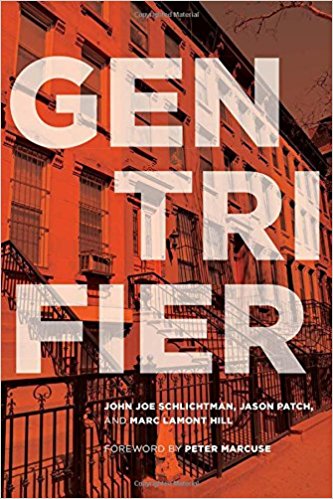 Gentrification is one of those words that is so ubiquitous that most of us think we know it when we see it. Rarely is it defined with any precision, however. As the authors of this new and important book argue, the term gentrification eludes an exact definition and has been so widely used and applied across different contexts that it has “overgrown its original boundaries” (p. 9) and “displaced so many other meaningful concepts that urbanists once had in their tool kits”. (p. 10) The term often obscures more than it illuminates and, importantly for them, fails to engage in a nuanced way the processes of gentrification at both the macro (structural) and micro (individual) level. Most progressives don’t see themselves as gentrifiers and this failure, the authors argue, makes it difficult to see how inextricably intertwined we each are in the larger structural forces that shape our individual agency and choices. More to the point, the authors want to illuminate the relationship between the macro and micro to open the true “black box” that “contains our most valuable tools for understanding gentrification.” (p. 16)
Gentrification is one of those words that is so ubiquitous that most of us think we know it when we see it. Rarely is it defined with any precision, however. As the authors of this new and important book argue, the term gentrification eludes an exact definition and has been so widely used and applied across different contexts that it has “overgrown its original boundaries” (p. 9) and “displaced so many other meaningful concepts that urbanists once had in their tool kits”. (p. 10) The term often obscures more than it illuminates and, importantly for them, fails to engage in a nuanced way the processes of gentrification at both the macro (structural) and micro (individual) level. Most progressives don’t see themselves as gentrifiers and this failure, the authors argue, makes it difficult to see how inextricably intertwined we each are in the larger structural forces that shape our individual agency and choices. More to the point, the authors want to illuminate the relationship between the macro and micro to open the true “black box” that “contains our most valuable tools for understanding gentrification.” (p. 16)
Many of us associate gentrification with significant social and economic change and the accompanying displacement of long-standing residents in our cities and neighborhoods. Whether gentrification necessarily involves displacement has become somewhat contested. An oft-cited 2016 Federal Reserve Bank of Philadelphia study found “that gentrifying neighborhoods [in Philadelphia] do not lose residents at a substantially higher rate than other neighborhoods”. Nevertheless, the process of gentrification in most instances is palpable to longstanding residents and also quite visible to the casual observer. The term gentrification was coined by sociologist Ruth Glass in 1964 to describe the “invasion” by the middle class of working class neighborhoods in London. The entrance of newcomers of a different race and/or class into previous ethnically or economically homogenous neighborhoods is a potent marker of gentrification. So too are the kinds of amenities and services—like Starbucks or Whole Foods—that often appear on the heels of a critical mass of newcomers.
Today, gentrification continues to be associated with the racial and economic transformation of low-income neighborhoods. The consequences of gentrification, as even the 2016 Federal Bank study concluded, too often result in patterns of concentrated advantage and disadvantage in cities and metropolitan regions. Given this, it is fair to suggest as the authors of Gentrifier do, that in order to figure out what to do about gentrification we have to understand at a more nuanced level what produces it. This nuance is possible by teasing apart the assumptions that we bring to the table when we conceptualize, theorize, name, and blame “gentrification” for the kinds of changes we see happening all around us. Additionally, we must learn to locate our own individual choice in these patterns and the way that our choices are shaped by larger structural forces.
The authors observe that we tend to analyze gentrification either in structural terms—blaming forces larger than ourselves, such as the capitalist market or neoliberal urban development—or by focusing on the role of individual agency and the consumption preferences or patterns of “gentrifiers”. They want to explore the interaction between these two camps and the nuances that such exploration can produce. The way they go about this exploration is to position themselves, their identities and behaviors in trying to understand gentrification and its processes. By “socially locating” themselves within their study of gentrification and offering a “multi-tool” analytical device that seeks to help us understand and examine our individual household’s residential decisions, they are able to help us to see how our decisions structure the process of gentrification. The multi-tool encompasses seven facets of a housing choice: monetary, practical, aesthetic, amenity, community, cultural authenticity, and flexibility. (pgs. 28-29) Using this toolkit, the authors recount each of their stories, or “dispatches,” of being gentrifiers in places as diverse as Philadelphia, New York, Providence, Chicago and San Diego.
The idea that “we are all gentrifiers” does indeed complicate and provide nuance to the locational decisions, motives, and choices at different facets of life. This individual agency alone, however, is only part of the story. Individual and familial choices about which neighborhood and location to “invade”, the authors note, are made against a backdrop of an “accumulation of previous decisions, actions, and policies that frame the current reality in the neighborhood”. (p. 88) Structural processes at almost every level—global, national, regional, local, and sub-local—invariably shape, constrain, and enable individual agency. These include capital mobility and competition, deregulation and privatization, deindustrialization, the securitization of the real estate industry, the rise of the service economy and changing consumption patterns, persistent patterns of racial segregation and discrimination, urban renewal policies, among others. These processes produce and shape gentrification, and not the other way around. As the authors put it, “[w]e have let gentrification become the explanatory factor in understanding urban change rather than interpreting gentrification within broader changes”. (p. 118)
Seen within its macro-context, an important move by the authors is to bring under critical view the “displacement thesis”—the idea that displacement is an inherent and defining component of gentrification. It suggests a clear causal relationship between displacement and gentrification, displacing a broader focus on a progressive urban agenda such as cross-class alliances. In other words, they argue, the displacement thesis suggests that the solution to gentrification is to stop the practice of gentrifying or invading neighborhoods. Managing gentrification becomes, as they say, akin to “managing weeds in a garden”. (p. 110) It avoids the more difficult tasks of identifying and undermining the various strategies employed by a capitalist economy—such as the “rent gap” by individuals, developers, and local governments. These strategies promote gentrification and often displacement. But not all displacement is due to gentrification. To equate the two, the authors suggest, is to displace the focus on processes that displace for reasons unrelated to gentrification and to ignore the kinds of slower, “bottom-up” gentrification that does not involve extensive displacement and where long-time residents (including renters) are able to stay and reap the positive results. (p. 124) This latter point is reminiscent of what Majora Carter calls “self-gentrification,” an emerging phenomenon in places like the South Bronx, New York.
The point, the authors are keen to stress, is that gentrification is produced within a larger economic and social context that often renders irrelevant the motives, manners, or behavior of individual gentrifiers. This is not to say that the way individuals go about making locational and household decisions are not problematic, nor that development policies and practices don’t normalize and naturalize the ways that these “invasions” occur and don’t help produce those who become “invaders”. (p. 128) Rather, appreciating the interaction between the structural and the individual, or macro and micro, levels entails privileging the forces and processes of late capitalism, growing inequality, and racial formation. In this way, all gentrifiers “serve as disruptive forces in the economic, social and cultural make-up of a neighborhood” and “are operating as Columbuses within their respective contexts: functioning as economic, social and cultural power brokers within a space in which they are less rooted and upon which they are less dependent than their neighbors”. (p. 171)
Having offered what is a very personal and conceptually rigorous analysis, the authors end up punting a bit too much on the implications of their arguments. They are right to point out that even their analysis begs the question “where do we go from here?” There are two takeaways that are useful even if incomplete and unsatisfactory. The first takeaway is to push back against a frame of gentrification as a “uniform causal mechanism of good or evil”, as it diverts efforts to work on the ground to improve the lives of residents in communities. In other words, “progressive gentrification theory has sometimes displaced the potential for progressive practice”. (p. 181) This is a profound insight and one that nods in the direction of the second takeaway that is quite hopeful. In trying to understand and situate the “gentrifier who is against gentrification”, the book attempts to hold out the promise for coalition building and movements, like the “right to the city”, that seek to intervene in the either/or politics of class to build an alliance or assembly. Such an alliance would demand both material goods for those deprived of them and a different future “by those discontent with life as they see it around them”. (p. 185)
In the final analysis, the reader could be forgiven for wanting more from the authors about what such demands would look likes substantively—i.e., what form they would take in policy terms. How might the substance of our policies and urban development processes change in response to their analysis? In the end, the prescriptions they offer are far more modest than their prognosis of the problem. They embrace as transformative inclusionary zoning policies, metropolitan regional collaboration, transit-oriented development, fair share housing policies and the like. They also embrace, to their great credit, community-led transformative solutions such as community benefit agreements and community land trusts, both of which have helped to fuse into progressive alliances and coalition some of the presumed disparate elements of those who live in gentrifying communities.
While all of these policies and practices have their merits and potential for transformation, they don’t match the scale of the structural forces that they argue drive gentrification. To what ends are or should these policies be a means? Even the “right to the city” can seem like the kind of vague and widely employed term that requires unpacking and specification before it is fully able to illuminate and drive transformative change. The book is a powerful reminder of the need for a new framework for urban development that re-imagines and re-situates the position of a variety of actors in the urban/suburban landscape. New policies and practices along the lines of the urban commons, for instance, imagine the potential for a framework and set of tools for inclusive and equitable forms of community building and city-making that resonate in different, alternative economic models. They do so by providing a bridge between the claim to the city, and its resources, and the need for more sustainable economies built on solidarity and circularity (versus extractive and speculative). Only this larger, more ambitious type of vision seems to match the scale of the impressive and trenchant analysis that this book offers.
Sheila Foster
Washington, DC
To buy the book, click on the image below. Some of the proceeds return to TNOC.
About the Writer:
Sheila Foster
Sheila R. Foster is a Professor of Law and Public Policy (joint appointment with McCourt School of Public Policy) at Georgetown University. Professor Foster is the author of numerous books, book chapters, and law journal articles on property, land use, environmental law, and antidiscrimination law.




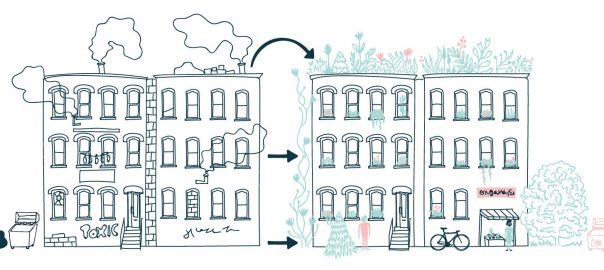

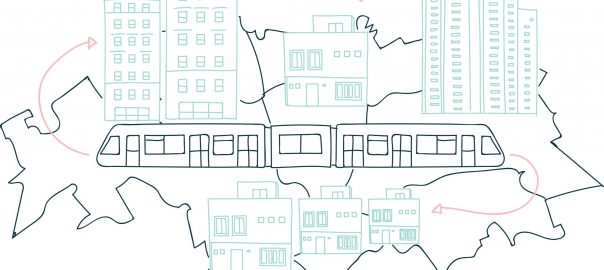

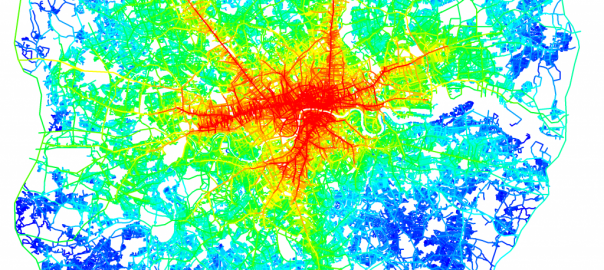

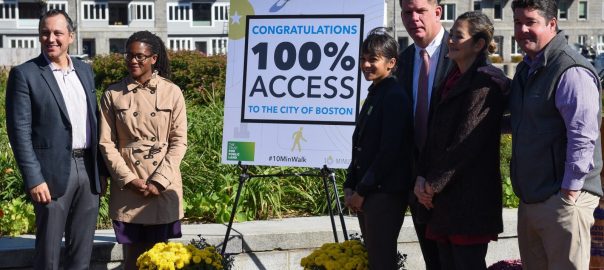

Add a Comment
Join our conversation